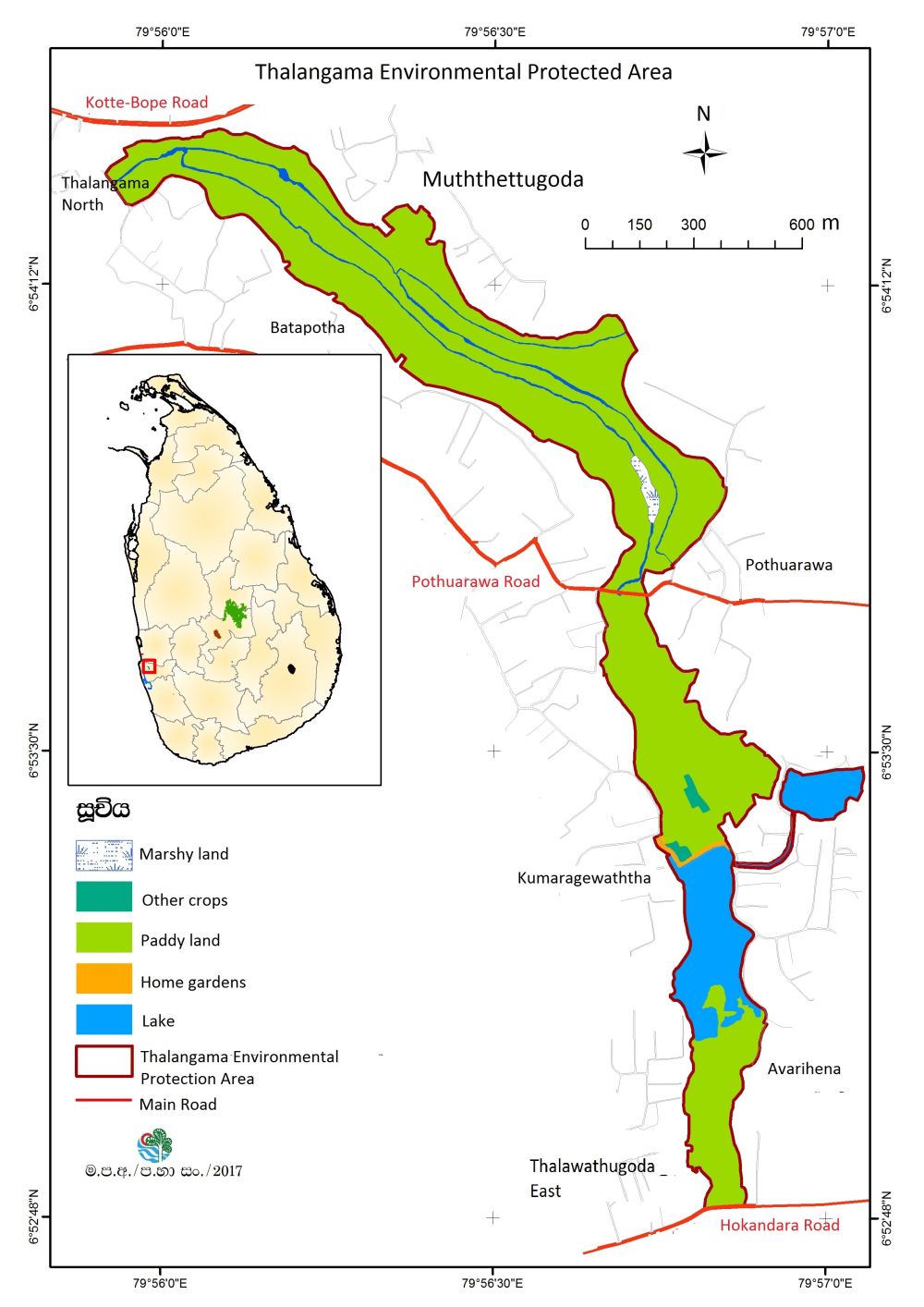The Thalangama Area
WILDLIFE AND PROTECTION STATUS
 Click to zoom
Click to zoom
The Thalangama tank and its environs were declared as an Environmental Protection Area (EPA) under the National Environmental Act (Gazette Extraordinary No. 1487/10, dated 5th March 2007). The Gazette was amended in 2021 to allow the construction of an elevated highway passing the paddy fields and smaller Averihena tank.
The extent of the Environmental Protection Area (see map) is approximately 118 hectares (Central Environmental Authority [CEA]). According to the National Wetland Directory of the CEA and other surveys its habitat includes the more recently constructed Averihena lake as well as freshwater swamp forests, grasslands and paddy fields which are flooded during some seasons, floating and rooted plants, scrub lands and trees hosting seasonally up to 100 different species of migratory, resident and endemic birds. The area can show 30 species of dragonflies, 12 species of reptiles, 10 species of mammals and 15 freshwater fish species aside a very rich fauna. Since the tank and its environs were declared as an Environmental Protection Area (EPA) only a few uses are permitted within it, like traditional fishing and paddy cultivation.
A particular threat to the ecological balance is, for example, the release of non-native fish into the lake. Another ecological challenge is the fast growth of invasive plant species like the Wel Atha trees (Pond or Monkey Apple (Annona glabra)), water hyacinths (Eichhornia crassipes) and Salvinia (a type of watermoss) on the lake surface. The growth of water hyacinths was catalyzed by the latest dredging activities, which brought nutrients from the sediments back into circulation, but also by the large bird colonies (and their droppings), not to mention storm and greywater inflow. While we are keeping since several years now the spread of Water Hyacinths under control, other water weeds, like Salvinia or the submerged invasive Coontail and Bladderwort remain a challenge.
Among the endemic and endangered mammals, the Purple-faced leaf monkey is the noisiest and most visible around the lake, but also the one most disliked by local residents who fear for their phone lines and roofing sheets. The western purple-faced langur which is the subspecies living around the lake is one of the 25 most endangered primates in the world. There are also endemic and endangered fish species in the lake, like the Day’s killifish and Yellow dwarf catfish (t.b.c.). After sunset or in the early morning, also the highly protected Fishing cat can be seen and with much luck a Sri Lankan jackal.

Photos: Thikula Samaradivakara (Jackel), Pay Drechsel (Langur), Vidura Gamini Abhaya (Fishing Cat).